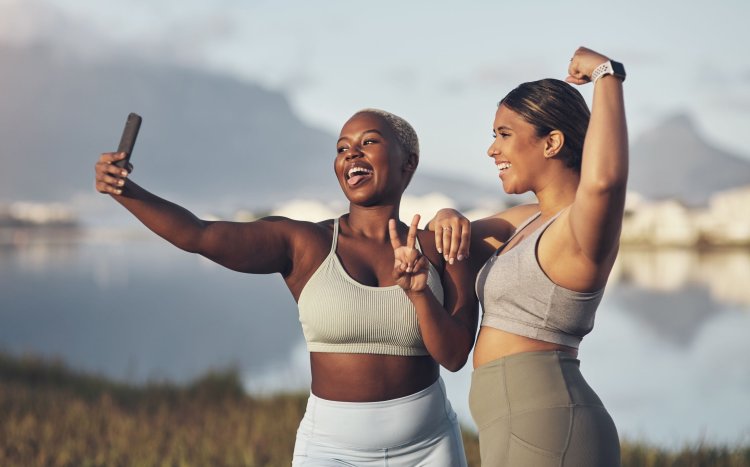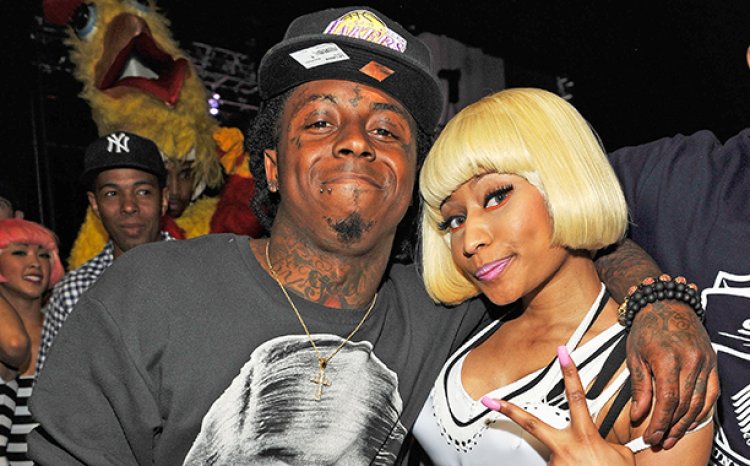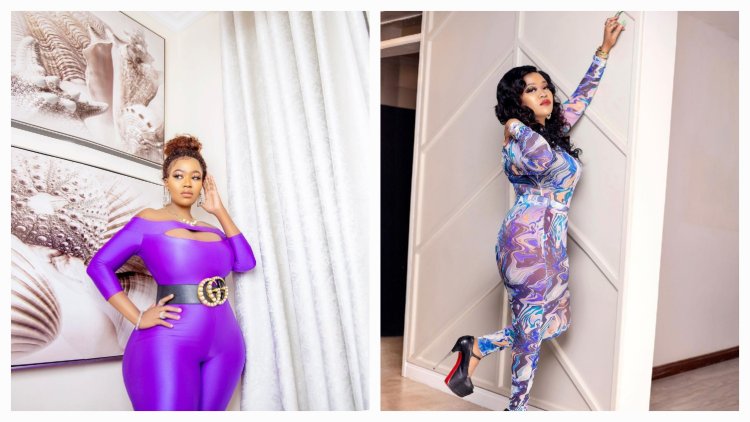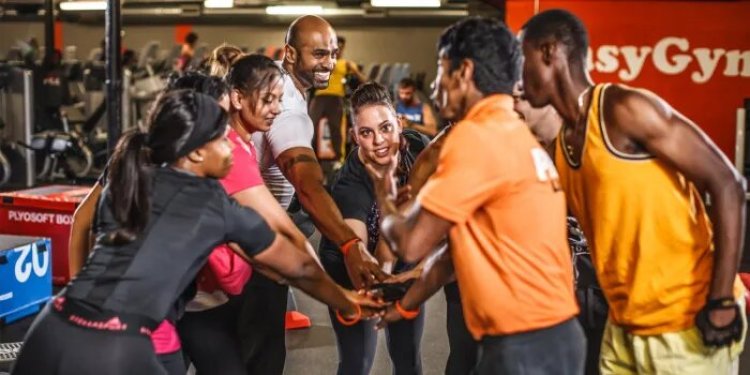DENVER B: Areas Where Viral Body Positivity Movement Failed
The body positivity is believed to have sprung in the 2010s yet its true origins date back to the 1960s when it was called fat acceptance.

While I was on hiatus and moonwalking my way through the inter-web about a month or two back, I stumbled across a death report.
A lady who went by the name Jacky Oh! (wife to celebrity DC Young Fly) had passed away after travelling to Miami for a “mommy make-over” surgery. This death was a shock to many African Americans and soon ignited a discussion on Twitter on the exponential proliferation of female enhancement surgeries, commonly thrown under the abbreviation BBL.
About a week later, a clip circulated on Twitter which featured Nicki Minaj speaking on how her time as a young protégé under Lil Wayne influenced her decision to go under the knife during an interview with the Joe Budden Podcast.
She attributed it to the fact that ‘Wayne’ would come to the studio with a girl every time and would make jokes about women and big butts. The women Lil Wayne would bring would also have big butts as well which in turn made her feel incomplete, pushing her to get plastic surgery done.

Nicki Minaj posing for a past photo with Lil Wayne. /EW.COM
Where Body Positivity Movement All Started
The body positivity is believed to have sprung in the 2010s yet its true origins date back to the 1960s when it was called fat acceptance.
The term ‘Body Positive’ came into life in 1996 when a psychotherapist and an individual who had been through treatment for an eating disorder founded the website thebodypositive.org. The site sought to assist those struggling to lose weight by taking their focus off of it, according to verywellmind.com
What we have today is more of a modern resurgence in the matter rather than a new existence. This began in 2012 challenging the premise of unrealistic feminine beauty standards.
This new wave ended up encompassing women as a whole over time, running by the line ‘All bodies are beautiful’. This movement was aimed at giving the women and girls of today a sense of confidence for they believed that they were uniquely beautiful, despite their perceived flaws and social image issues.
It was a way to tell each woman/girl that they were beautiful, regardless of how they looked.
Where Are We Today?
This recent version of the body positivity movement in the light of social media has flourished beyond most people’s imaginations, with many larger-bodied individuals falling under that umbrella, becoming influencers (fatfluencers) and speaking for their large counterparts as well as those who believe they are expected to look a certain way.
The unfortunate reality is that while they speak under the umbrella of all bodies being beautiful, many thrive on the dislike for smaller, skinny women and now rampant fetishization of fat and large women.
With celebrities like Lizzo championing the movement, there has been a widespread disdain for calling fat people fat and using words that are considered ‘less hurtful’ such as big-boned and plus size among others.
This has in turn, pushed the envelope on what’s considered too much and, on the flip side, made smaller, skinnier women self-conscious due to their lack of size in specific regions of the body, namely the tatas (breasts) and bunda (buttocks).
This change is mostly due to the change in Western beauty standards (more so American) whereby the definition of beauty is a slim waist, big breasts and a large behind.
I theorize that this took hold with the proliferation of Hip-hop in the late 2000s, which was characterized by the increase in the number of African American women with large (sometimes enhanced) features that were synonymous with strip clubs in the more African-American-populated areas.
A Blended Social Standard
Even those with moderately sized bodies have been affected negatively. In the age of knowing the destructive capabilities of social standards, more women are speaking on the effects of the ‘Instagram body’ which is an example of the same but taken to near extremes for some.
The rise of cosmetic procedures which would include lip fillers, breast enlargement, tummy tucks and the infamous Brazilian butt lift (BBL) didn’t help the situation but rather worsened it.

Vera Sidika before and after her buttocks reduction surgery. /VIRALTEAKE
This new desirable image that became the norm online depressed many. This had led many to body-altering procedures, with many of them unsafe, and others catastrophic.
The age where women were supposed to see the beauty in themselves and each other is the same age where mothers feel the need to get tummy tucks, gastric procedures and liposuction so as to get them back to their original look.
The look that wasn’t changed by a process so monumentally special that their ability to look as they do after should be inherently negligible. And this is all existent in the era of body positivity.
Fat Renamed, Standards Reframed
Amongst some of the working class of today, there are a silent many that are opting for cosmetic procedures to help rid themselves of the ‘excess body’ that doesn’t give them the look they desire (or assume others desire). Many of them are celebrities, influencers and even politicians.
As the icons that many young people look up to, their bodies and their unchanged shapes are the goals of many, most of whom cannot achieve the same naturally within whatever period they claim they sized down to.
Many have gone under the knife but speak of amazing diets and gym workouts/trainers that range from okay to borderline garbage. Their body positivity has led them to the extremes to get the body they’d positively agree to have.
On the flip side, we have another class of body positivity: Those that let themselves go. They were called fat/unhealthy before, and as a result, chose to embrace it wholly.
They call those who speak about going to the gym and/or working on their bodies for self-improvement stuck-up, insensitive and fat-phobic.
They believe that their conditions are a result of nature and trying to change that isn’t their problem, so they should be accepted as is. Saying differently is fat-phobic and insensitive to their current life situation.
Did It Work?
In a day and time where calling someone fat is insensitive, we have more women with body dysmorphia because someone spoke about their size or worse still, didn’t say anything about it (rejection).
In a time when it’s supposedly okay to be fat (there I’ve said it), there are more women lining up for cosmetic procedures ranging from additive (breast and butt enlargement, fillers) to subtractive (tummy tucks, gastric bypass and liposuction) and even combos of the two (lipo + BBL).
We live in a time where body size is a sensitive discussion issue yet we’re more affected by it than ever, pushing the extremes of medicine and reshaping the English language to suit it. So in short, did the body positivity movement work?
Conclusion
With a lot tabled and critiqued, I’d argue yes and no.
Yes, because there are more women that aren’t trying to make themselves skinny by any means necessary. They have a better appreciation for their bodies and have a support system in case the appreciation wanes.
No, because they chose not to make positive improvements to their bodies but ask society to not judge them for their negative choices. Body positivity, in that case, was a success and a failure in its own right.
Maybe the idea should’ve been an appreciation with a sense of self-improvement, or maybe we shouldn’t have been asked to just simply stop using the word ‘fat’.
Either way, there are consequences for being alive in our time as a woman. Some can run, others just run their mouth.
Denver B is a TV personality on the show Men’s Conference and a podcaster on the Break Time on Westside podcast which speaks on love, sex & relationships spanning over 360 episodes. You can reach him through his email denversonline@gmail.com
Do you have an opinion article to share with us? Reach us on info@viraltea.co.ke


 Denver Bagaka
Denver Bagaka 




